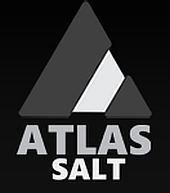 Arizona Silver drills 16.8 m of 45.8 g/t Ag at Ramsey
Arizona Silver drills 16.8 m of 45.8 g/t Ag at Ramsey
2017-11-14 14:27 ET – News Release
Mr. Greg Hahn reports
ARIZONA SILVER EXPLORATION INC. DRILLING CONTINUES TO INTERSECT SILVER ZONE AT RAMSEY SILVER PROJECT, LA PAZ COUNTY, ARIZONA
Arizona Silver Exploration Inc. has released the results from the second phase of its drilling in 2017 on the Ramsey silver project located in La Paz County, Ariz.
Drill results
Further to the company’s news release dated July 4, 2017, wherein it was announced that the company drilled 145 feet of 62.5 grams per tonne silver, the company is pleased to announce that it has drilled an additional five exploration drill holes, for a current total of 12 drill holes, from atop the ridge to the southeast of the Ramsey mine workings to test the potential for continuation of silver mineralization at depth beneath barren but altered rhyolitic volcanic rocks and postmineral cover. All five holes intersected silver mineralization as reflected in the attached table, which includes two holes drilled earlier in the year.
The Ramsey mine/Hill silver project
2017 drill program
THE RAMSEY MINE/HILL SILVER PROJECT 2017 DRILL PROGRAM
Hole No. From To Thickness Silver
(m) (m) (m) (g/t)
R1706 79.3 123.5 44.2 62.5
within 64 152.4 88.4 42.6
R1707 85.4 138.7 53.3 37.3
within 65.5 141.8 76.3 31.1
R1708 112.8 143.3 30.5 21.4
R1709 128.0 150.9 22.9 31.4
R1710 111.3 122.0 10.7 41.7
R1711 6.1 7.6 1.5 35.9
106.7 123.5 16.8 45.8
140.2 143.3 3.0 32.8
160.1 169.2 9.1 31.9
R1712 6.1 15.2 9.1 57.0
All of the holes drilled to date into the Ramsey mine/hill exploration target have intersected significant thicknesses of silver mineralization, which forms a shallow dipping tabular zone with open extensions to the north, east and south. Additional drill work is required to determine true width of intercepts. Surprisingly, the holes completed recently all hit a shallow silver zone that is not evident on the surface or in holes drilled previously from lower on the hill side. Hole R1712, which intersected 9.1 metres of more than 57 g/t silver just 6.1 metres below the surface exemplifies this shallow silver zone, which remains wide open to additional drilling to the north, east, and south.
Extensive and strong silica-and-iron alteration of the rhyolite across an area of about 700 metres by 250 metres that has never been drilled to the depths referenced in the intercepts above, and which appears to continue under post-mineral alluvial cover. The ultimate extent of this alteration area is unknown. This area represents a highly prospective target area for the continuation of silver mineralization encountered in the 2017 drill holes.
Review of the 2015 soil geochemistry results over the area of outcrop expression of the altered rhyolite reveals a very strong barium-zinc-lead anomaly that appears to be leakage coming up through the altered by barren rhyolite that overlies the silver zone. Silver is also weakly anomalous within the barium-zinc-lead anomaly. Barium, zinc, and lead are demonstrated to be intimately associated with silver mineralization in the drill holes completed to date and represent an excellent geochemical signature of the possible presence of the continuation of the silver zone at depth.
The Ramsey silver mineral system appears to be very large and is wide-open to the east and south, where no previous drilling or mine development has occurred.
The company is encouraged with the results of the drilling east of the old Ramsey mine workings and has intersected what it thinks is the periphery of a much larger silver-bearing hydrothermal system centred on the strong alteration mapped to the east and south. The company will post cross sections of the drill results to its web site after it have finalized them, and a plan view map showing the drill hole locations with respect to the strong geochemical anomaly referenced above.
Western deep induced polarity anomaly — a large target
The company drilled one hole (R1713) into the western deep IP anomaly along IP line 1, located approximately 800 metres west of the Ramsey mine area. The hole penetrated 15 metres of alluvial cover and then went through 110 metres of iron-rich Cretaceous metasediments before encountering a significant fault (possibly a detachment fault) which separates the overlying metasediments from an underlying granitic intrusion. The granitic intrusion is strongly altered with chlorite-calcite-oxidized pyrite (propylitic assemblage) and contains zones of strong silica alteration and quartz veining. The hole was bottomed in propylitic granite at 213 metres depth. This granite is not exposed for miles around the Ramsey mine property, and where it is exposed four to five miles to the west it is not as strongly altered as in drill hole R1713. Assays are still pending for this drill hole.
Quality assurance/quality control and analytical procedures
All drill cuttings were transported under strict chain of custody by ALS Minerals personnel to the ALS Minerals laboratory in Tucson, Ariz., where samples were dried and crushed to 70-per-cent-passing two mm, a 250-gram split is taken and pulverized to 85-per-cent-passing 75 microns, subject to a four-acid digestion, and then analyzed by ICP/MS for a 48-element package including silver, lead, and zinc. Samples over 100 parts per million silver and over 10,000 parts per million lead or zinc are reanalyzed using ICP for higher concentration levels. Selected intervals with high silver values will be re-submitted for one-assay-ton fire assays for gold. Greg Hahn, president and chief operating officer and a certified professional geologist (No. 7122) is the qualified person under National Instrument 43-101 responsible for preparing and reviewing the data contained in this press release.
We seek Safe Harbor.
http://arizonasilverexploration.com/news-releases/
































